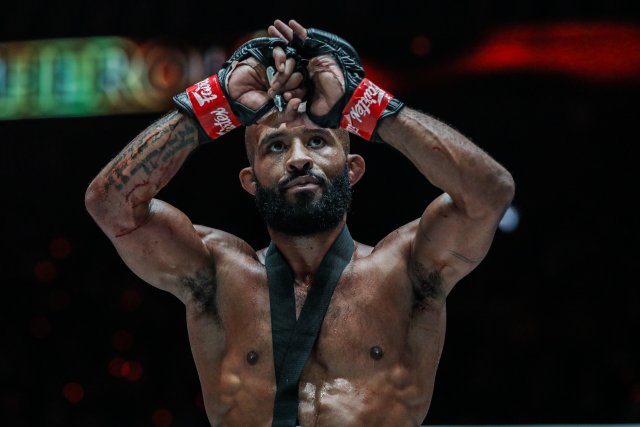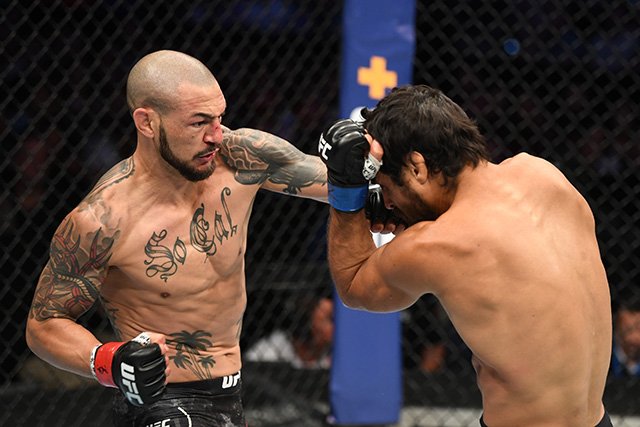Both Ben Askren and Demetrious Johnson were dominant and underappreciated, with adoring fans and dedicated doubters. Johnson was a proven GOAT in need of a change, while Askren needed a change to prove he was the GOAT. The similarities were hard to miss. After swapping promotions, however, “Mighty Mouse” and “Funky Ben” ended up on dramatically different career trajectories…
Why UFC Hawaii Probably Won’t Happen Any Time Soon
UFC President Dana White roughly a week ago was in Hawaii to watch local promotion Trinity Sport Combat for an upcoming episode of the Ultimate Fighting Championship’s YouTube series “Lookin’ for a Fight.” Naturally, the possibility of a UFC event in Hawaii was broached. Backstage, he told my colleague at KHON2 News the following: “Max [Holloway] wants it bad. We want to come here. We love this place. We got to get this thing figured out eventually. We’ll see what happens. I want it. Does the tourism board want it? Do they or do they not? If they do, we’ll come. If not, we understand.”
This sentiment isn’t new. The UFC met with the Hawaii Tourism Authority in 2018 to discuss holding a potential event in Hawaii and was unable to make a deal. The UFC asked for a $6 million subsidy, but the HTA was only willing to offer $1 million. Neither side budged, so they parted ways. The narrative that took place afterward and resurfaced again this week essentially goes like this: The greedy UFC is trying to exploit the hapless HTA. On a cursory glance, it certainly seems this way. For starters, it’s not as if the HTA is some island bouncer preventing anyone from coming. It isn’t necessary to get a subsidy from them to hold any kind of event in Hawaii, whether it’s a Bellator MMA card or a Snoop Dogg concert.
More to the point, $6 million is a lot of money, more than the HTA gave the NFL for the Pro Bowl ($4.2 million) or to have the Los Angeles Clippers, Houston Rockets and Shanghai Sharks play preseason games a few weeks ago ($2 million). Plus, part of the deal in those cases was for the NFL and NBA players to participate in community outreach programs, something the UFC can’t do because fighters are not employees and are only contracted to do fight-related activities, like open workouts and media conferences. In this way, paying more money for one event that offers less than what other cheaper investments offer does seem ridiculous.
That’s not the full story, though…
Cub Swanson and the Moment He Needed
The first time I saw Cub Swanson was a time he’d probably rather not remember. It was his fight against Jens Pulver at WEC 31, and I distinctly remember thinking Swanson was cocky and dislikable. In fairness, he was a 24-year-old on an 11-fight winning streak in the biggest fight of his life, so it was understandable and earned. However, he accused Pulver of ducking him, so it was hard not to feel a little malignant pleasure when he got choked out in 35 seconds. That night wasn’t about Swanson, though. It was a feel-good moment for “Little Evil,” an impressive rebound over an up-and-comer that, at the time, felt like the start of a career resurgence for the Ultimate Fighting Championship’s first lightweight king.
The next time I saw Swanson is also a time he’d probably rather not remember and possibly doesn’t actually remember but can’t forget because it’s been replayed so many times. It was at WEC 41 against Jose Aldo. Swanson picked up two consecutive wins after his loss to Pulver and seemed to be back on track to a title shot, but instead, he encountered a surging future all-time great. One strike and eight seconds later, Aldo became the talk of the sport. It was a coming-out moment for Aldo. It remains one of his most stunning highlights, and his in-cage victory dance is almost as memorable as his flying knee.
Those two instances are the earliest and most definitive examples of what has seemed to be the story of Swanson’s career: being on the wrong end of special moments…
From K-pop to HI-pop
K-pop is Korea’s most visible and wildly successful export. The contemporary conception of K-pop — melodic dance jams with glitzy production and hip-hop sensibilities — was born in 1992 when the group Seo Taiji and Boys performed their song “Nan Arayo” on national television. A blend of dance-ready rhymes in the verses and smooth vocals on the hook, “Nan Arayo” is widely considered the first modern K-pop song. Within 15 years of its birth, K-pop would become a global multi-billion dollar industry.
It’s tempting to look at K-pop as a model for the Hawaiian music industry…




